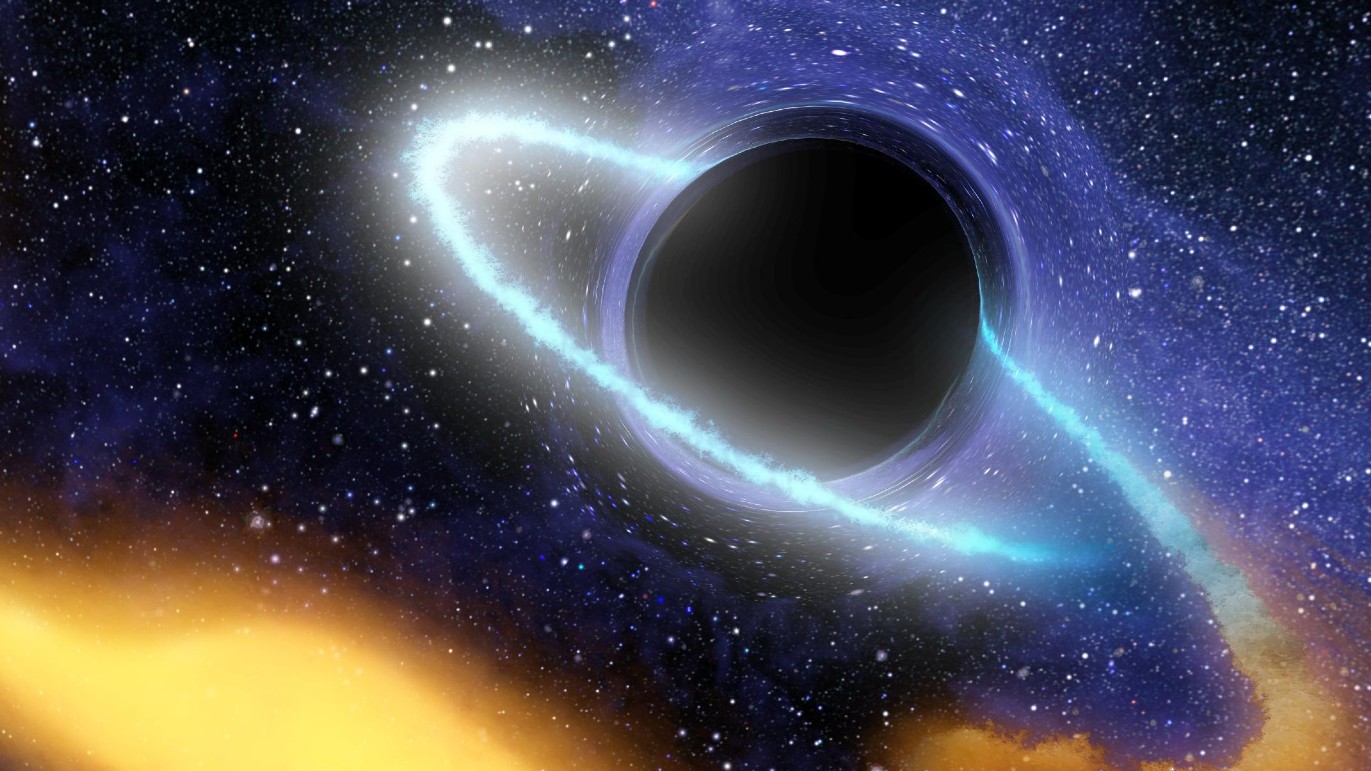Strange star system may hold first evidence of an ultra-rare 'dark matter star'
In a distant star system, a sunlike star orbits an invisible object that may be the first example of a 'boson star' made of dark matter, new research suggests.

Astronomers long thought that a peculiar star system observed by the European Space Agency's Gaia satellite was a simple case of a star orbiting a black hole. But now, two astronomers are challenging that claim, finding that the evidence suggests something far stranger: possibly, a never-before-seen type of star made of invisible dark matter. Their research, which has yet to be peer-reviewed, was published April 18 on the preprint server arXiv.
The system itself consists of a sunlike star and, well, something else. The star weighs a little less than the sun (0.93 solar mass) and has roughly the same chemical abundance as our star. Its mysterious companion is much more massive — around 11 solar masses. The objects orbit each other at a distance of 1.4 astronomical units, about the distance at which Mars orbits the sun, making a complete orbit every 188 days.
Related: 'Runaway black hole,' or sneaky galaxy in disguise? Experts are conflicted.
What could that dark companion be? One possibility is that it's a black hole. While that would easily fit the bill in terms of the orbital observations, that hypothesis has challenges. Black holes form from the deaths of very massive stars, and for this situation to arise, a sunlike star would have to form in companionship with one of those monsters. While not outright impossible, that scenario requires an extraordinary amount of fine-tuning to make the match happen and to keep these objects in orbit around each other for millions of years.
So perhaps that dark orbital companion is something much more exotic, as researchers propose in the new study. Maybe, they suggest, it's a clump of dark matter particles.
Dark matter is an invisible form of matter that makes up the vast majority of the mass of every single galaxy. We still do not have a solid understanding of its identity. Most theoretical models assume that dark matter is smoothly distributed in each galaxy, but there are models that allow it to clump up on itself.
One of these models hypothesizes that dark matter is a new kind of boson. Bosons are the particles that carry the forces of nature; for example, a photon is a boson that carries the electromagnetic force. While we know of only a limited set of bosons in the Standard Model of particle physics, there's nothing, in principle, stopping the universe from having many more kinds.
Get the world’s most fascinating discoveries delivered straight to your inbox.
These kinds of bosons wouldn't carry forces, but they would still soak the universe. Most importantly, they would have the ability to form large clumps. Some of these clumps could be the size of entire star systems, but some could be much smaller. The smallest clumps of bosonic dark matter could be as small as stars, and these hypothetical objects get a new name: boson stars.
Boson stars would be entirely invisible. Because dark matter doesn't interact with other particles or with light, we could detect them only through the gravitational influence on their surroundings — like if a regular star were to orbit a boson star.
The researchers pointed out that a simple model of boson dark matter could produce enough boson stars to make this result in the Gaia data plausible, and that replacing a putative black hole with a boson star could explain all of the observational data.
While it's unlikely that this is actually the discovery of a boson star, the authors still urged follow-up observations. Most importantly, this unique system gives us a rare opportunity to study the behavior of strong gravity, allowing us to examine Einstein's theory of general relativity to see if it holds up. Secondly, if it is a boson star, this system is the perfect experimental setup. We can play around with our models of boson stars and see how well they can explain the orbital dynamics of this system and use that information to glimpse into the dark corners of the universe.

Paul M. Sutter is a research professor in astrophysics at SUNY Stony Brook University and the Flatiron Institute in New York City. He regularly appears on TV and podcasts, including "Ask a Spaceman." He is the author of two books, "Your Place in the Universe" and "How to Die in Space," and is a regular contributor to Space.com, Live Science, and more. Paul received his PhD in Physics from the University of Illinois at Urbana-Champaign in 2011, and spent three years at the Paris Institute of Astrophysics, followed by a research fellowship in Trieste, Italy.
